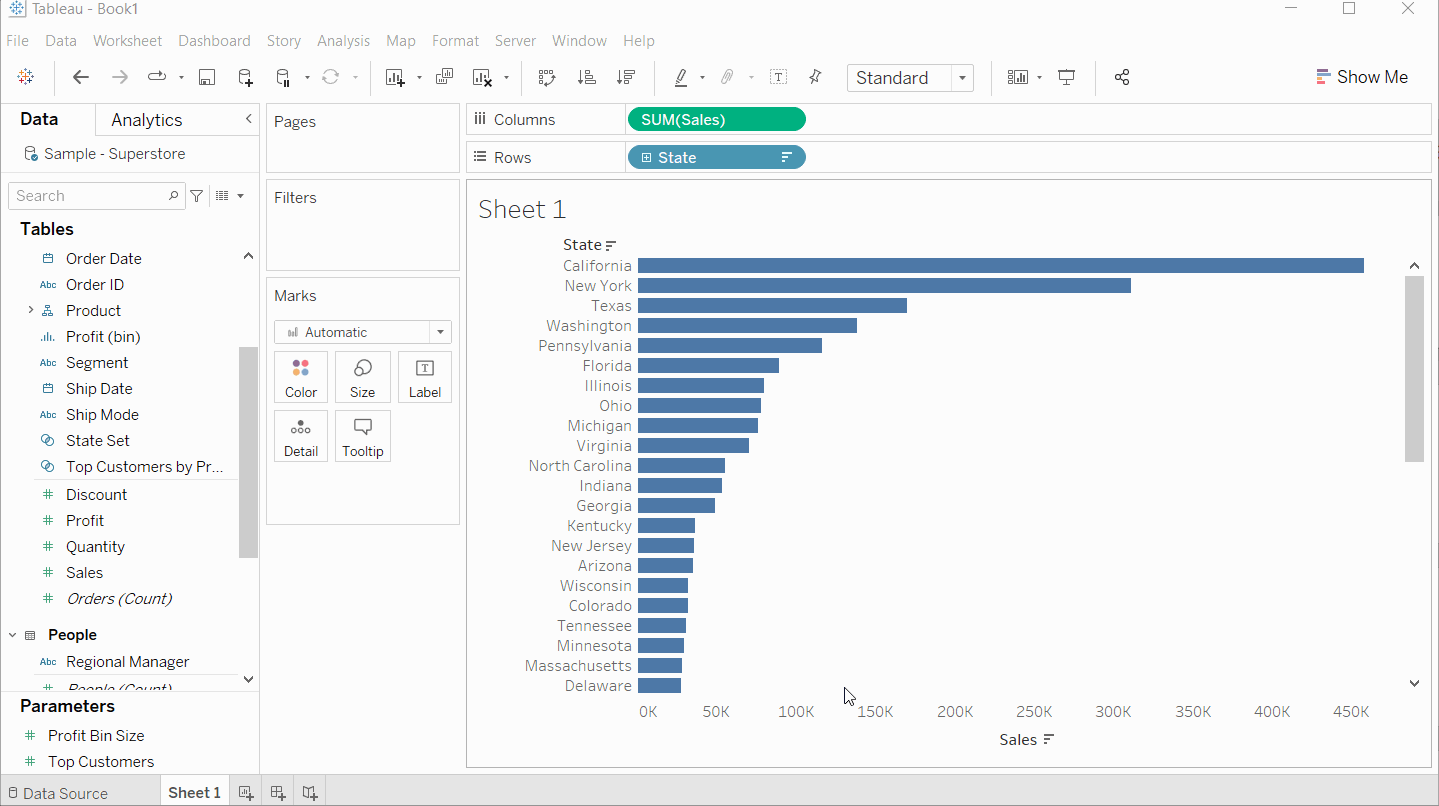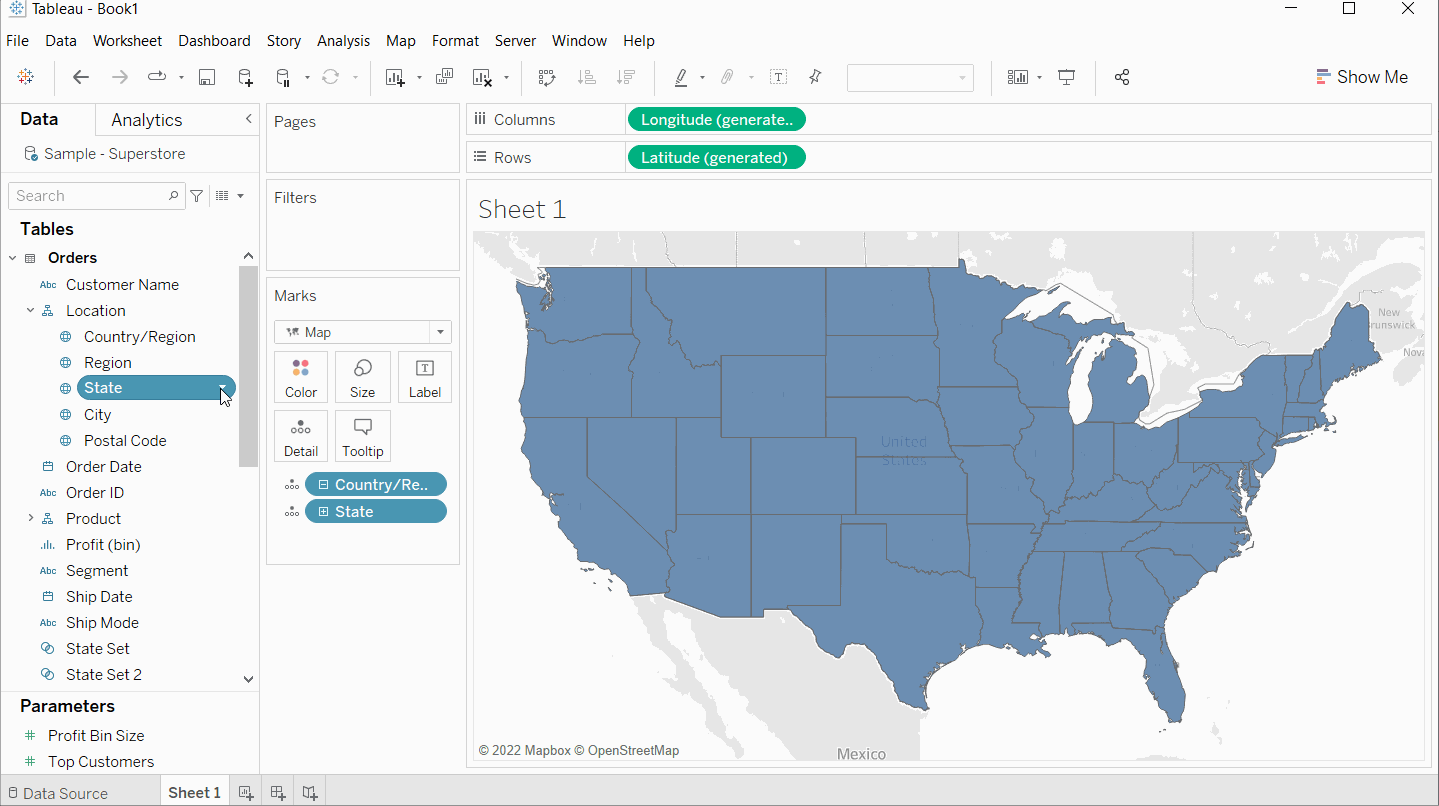Sets
Sets are a useful tool in Tableau to help narrow down your data. Using sets, we can make custom fields based on some conditions that we want to look at.
There are three types of sets:
• Fixed: Fixed Sets do not change, even if the underlying data changes. They can be based on single or multiple dimensions.
• Dynamic: Dynamic sets will change when the underlying data changes and can only be based on a single dimension.
• Combined: Two created sets that have been combined. This can be done by either finding the common members in the two sets or excluding the common members.
When creating a set, the data will be split into ‘IN' and ‘OUT' the former meaning those that are in the set and the latter meaning those excluded from the set.
When creating sets, you will be given three different options on how you want to determine your set:
• General: Used to select one or more values when creating the set.
• Condition: The condition tab can be used to set definitions for what values are included in the set. For example, only including dimensions with a specific field value (SUMsales over 100k)
• Top: this tab can be used to define limits of what to include in the set for example the top N of a specific.
Below is an example of how to create a Top N set.

Groups
Grouping is a method of combining multiple members in a single dimension to create a higher category of the dimension. When creating a group, a new dimension will be automatically created. Multiple groups can be created within a single group as seen in the walkthrough below.

Groups are very handy for correcting data errors as well as asking what if questions. e.g, what if we grouped states by X.
